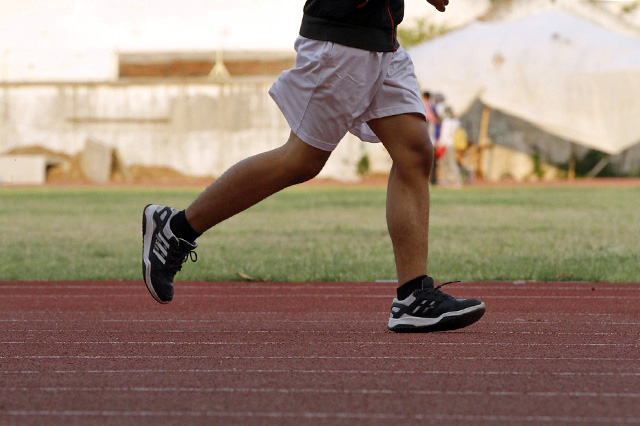The 1 km run test is one of the fitness tests used in the International Physical Fitness Test battery. Participants are required to run as quick as they can over that distance. A shorter distance (600m or 800m) is used for girls and young boys.
test purpose: This test measures aerobic fitness in the young or those of low fitness level.
equipment required: oval or running track, stopwatch.
pre-test: Explain the test procedures to the subject. Perform screening of health risks and obtain informed consent. Prepare forms and record basic information such as age, height, body weight, gender, test conditions. Measure and mark out the course. Ensure that the participants are adequately warmed-up. See more details of pre-test procedures.
distance run: 1 km for boys 14-19 years old, 800 meters for girls 14-19 years old, and 600 meters for boys and girls 13 years old and under.
procedure: The aim of this test is to complete the required distance in the fastest possible time. On the signal, "ready," all participants line up behind the starting line. On the command ‘Go!’ the clock will start, and they will begin running at their own pace. Cheering or calling out the elapsed time is also permitted to encourage the participants. Walking is permitted but not encouraged.
 1000 meter Run Test arund the track
1000 meter Run Test arund the trackscoring: The total time taken to complete the distance is recorded, in minutes and seconds.
reliability: the reliability of this test would depend on practice and pacing strategies, and motivation level. There should be good reliability if these issues are addressed.
advantages: groups of up to 30 can be tested at once, and it is a very cheap and simple test to perform with minimal equipment.
disadvantages: Practice and pacing are required to maximize the subject performance, and also the test results can be affected greatly by motivation.
comments: for older athletes, and those of high fitness level, a running test of longer distance would be more appropriate, to truly test the aerobic energy system. If you are testing a large group, more control at the finish line can be achieved by making a finishing chute by tying ropes between high jump standards. The timekeeper stands at the finish line, and calls out the time as the runners cross the finish line.
The Test in Action
- This test is part of the International Physical Fitness Test
Similar Tests
- 800 m anaerobic run test — time to run 800m
- 1 Mile Run Test — run 1 milein the fastest possible time.
- APFT 2 Mile Run Test — run 2 miles in the fastest possible time.
- Marine PFT 3-Mile Run — run 3 miles in the fastest possible time.
- Walk tests: Rockport Walk Test, 2 km Walk Test — walk for a set distance as fast as possible.
Related Pages
- General Walk / Run test
- Other walk/run tests, and see the comparison page for a overview of the walk and run tests.
- about the International Physical Fitness Test


 Current Events
Current Events